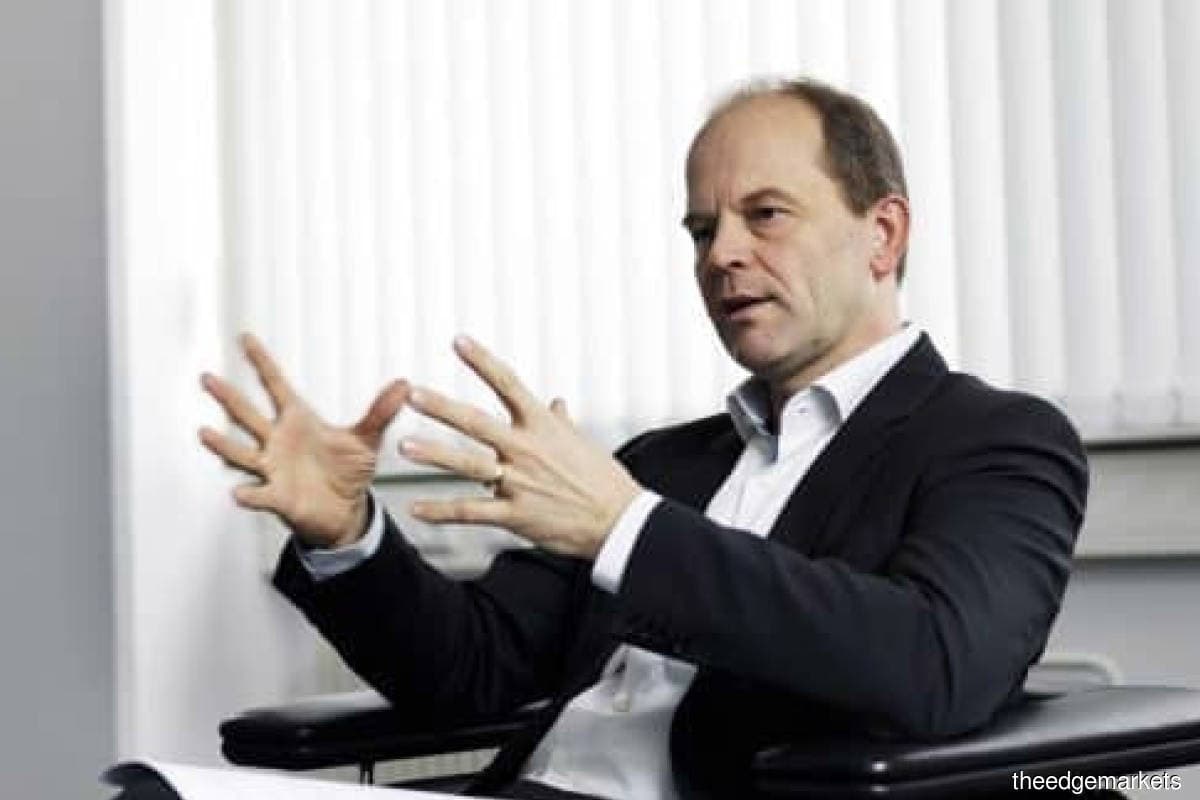
This article first appeared in The Edge Malaysia Weekly on April 18, 2022 - April 24, 2022
VIENNA-listed Austria Technologie & Systemtechnik AG (AT&S) is looking to establish an integrated circuit (IC) substrate institute in Malaysia, which it believes will be the first of its kind globally.
The Austrian company is one of the world’s leading manufacturers of high-end printed circuit board (PCB) and IC substrates and had, last year, announced that it was building a new state-of-the-art facility in Kedah’s Kulim Hi-Tech Park. It planned to invest RM8.5 billion in Phase 1 of the project.
“We want to establish a substrate institute at one of the universities (in Malaysia). We are scouting for the right university now and we will need support from the (Malaysian) government on this. There will be a certain amount of investment associated with this to build up clean room facilities, prototype equipment to manufacture substrates and to do research on technology,” says AT&S CEO Andreas Gerstenmayer in an interview with The Edge.
As it is planned to be a collaborative effort between the company, the Malaysian government and the university, Gerstenmayer foresees investment to be shared among the collaborators. However, he declines to give details on the amount of investment the company is planning to put in.
Gerstenmayer says that once the company has identified several potential universities for this project, the next step will be to engage with the relevant ministries.
“It will be one of those universities that are already more established because we don’t have the time and cannot afford to build it up from scratch. It will be one that is already in the microelectronics industry,” he explains.
Gerstenmayer shares that AT&S is also looking to bring in one or more European universities to help it achieve its ambition. He believes that there is a need for such an institute to train students on the industry’s processes and technology.
“You can have a course on microelectronics or one in semiconductors, but there is nothing available in IC substrates. This is a very special process and requires special technology and material. As the package — housing and substrate — becomes more and more complex in the future, we need specialists and material scientists,” he says, adding that the materials used in the IC substrate industry are vastly different from those found in the microelectronic supply chain.
IC substrates are components that provide connections between silicon dies and the PCBs. They are made up of several layers, with a supporting core in the middle. It is often used in cloud edge computing, data centres and server farms, as well as consumer devices.
While IC substrates are essential to semiconductor chips, there is currently a global shortage due to overwhelming demand and lack of supply. The supply constraint is partly owing to under-investment by substrate manufacturers who feared that the demand could decline, leaving them with excess capacity.
However, the situation has now changed. Gerstenmayer say the industry is undergoing heavy investment activity and will help to contribute to a more balanced market in the future.
On its part, AT&S has been keeping busy ramping up its investments in recent years. It built a new phase of its plant in Chongqing, China, during the Covid-19 pandemic and is now focusing on its commissioning, committed to a RM8.5 billion substrate plant in Kulim, Kedah, and is constructing a new research and development centre in Leoben, Austria.
Gerstenmayer says the entire microelectronics market is booming and foresees that it will continue until 2025 or even 2026. The main driver behind the boom, especially for the substrate business, is the digitisation that is happening globally.
In essence, with more digitisation, more data volume is generated by devices and higher processing power is needed in a microprocessor to handle and manage the data.
“Whether in 5G base stations, in clouds, server farms, in the future in autonomous driving, all these need high-performance processors. And the need for high performance creates a complete new architecture [in IC substrates].
“In the past, the microprocessor package was simple, with just one main CPU chip in it. But in the future, there will be multiple chips,” he says.
The multiple chips, or heterogeneous integration, means that more capacity and more sophisticated technology is needed, fuelling the demand in the IC substrate market.
AT&S, whose fiscal year ends in March, has just closed its financial year 2022 (FY2022). It had earlier guided that it would meet its revenue of €1.5 billion (RM6.92 billion) and generate earnings before interest, taxes, depreciation and amortisation (Ebitda) margins of 20% to 23%.
On the slightly longer-term horizon, AT&S, in its guidance to investors, estimates that revenue will grow to €3.5 billion by FY2025/FY2026 with Ebitda margins of 27% to 32%.
AT&S shares closed at €48.30 last Wednesday, valuing the company at €1.91 billion. The share price has risen 46.59% over the past one year.
Save by subscribing to us for your print and/or digital copy.
P/S: The Edge is also available on Apple's AppStore and Androids' Google Play.